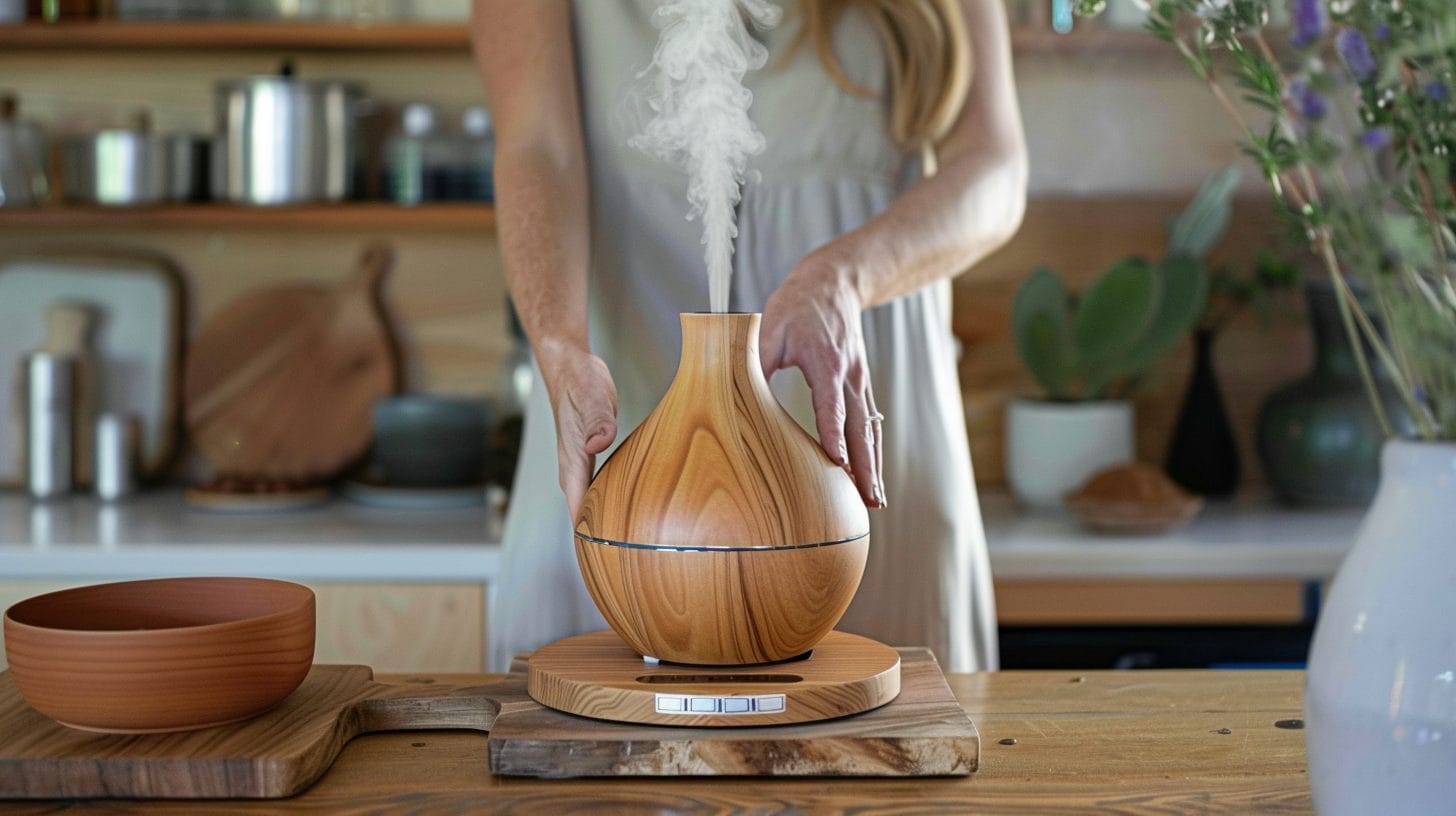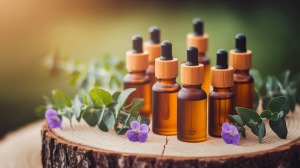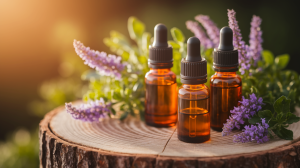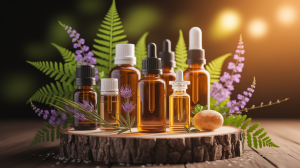Discovering how to repel stink bugs effectively with essential oils is a game-changer for homeowners plagued by these pesky invaders. Essential oils, known for their aromatic and therapeutic properties, also play a significant role in pest control, offering a natural, chemical-free method to keep stink bugs at bay. This article provides a straightforward guide to creating your repellents using essential oils and shares valuable background information on stink bugs and the efficacy of essential oils against them.
Crafting Your Own Stink Bug Repellent
Homemade Stink Bug Repellent Spray: Mixing essential oils with water creates an effective repellent spray. Essential oils like spearmint, lavender, lemongrass, clove, and ylang-ylang have been identified as particularly effective against brown marmorated stink bugs. To prepare the spray, combine 2 cups of water with 10 drops of mint essential oil, or for a more robust blend, use 10-15 drops of a combination of clove, lavender, lemon, lemongrass, mint, or eucalyptus oil per cup of water. Vigorously shake the mixture in a spray bottle and apply it around windows, doors, and other entry points.
Cotton Ball Method: Soaking cotton balls in essential oils and placing them around the home can deter stink bugs. This method allows for a sustained release of the oils’ aroma, creating a protective barrier against these insects.
Proactive Measures and Additional Advice
Taking steps to prevent stink bug entry is crucial. Sealing cracks, removing moisture sources, trimming vegetation near your home, planting deterrent flowers like marigolds and lavender, and managing outdoor lighting can significantly reduce stink bug attraction to your property. Always conduct a patch test to ensure the oil blend does not damage surfaces and keep the oils out of reach of children and pets due to their potent nature, and learn how to get rid of stink bugs in a safe manner. In cases of severe infestation, professional pest control services might be necessary.
Understanding Stink Bugs and Essential Oils
Stink bugs, part of the family Pentatomidae, are notorious for their shield-like shape and the unpleasant odor they release when threatened or crushed. This defense mechanism helps brown marmorated stink bugs deter predators but makes them unwelcome guests in homes, often finding their way into attics and walls. The search for overwintering sites drives their seasonal invasions, particularly in the fall.
Essential oils, extracted from plants, contain compounds that can repel or even kill brown marmorated stink bugs, making them a valuable tool in managing indoor invasions. Their effectiveness against brown marmorated stink bugs is attributed to their strong scents and potential insecticidal properties, particularly when combined with soapy water treatments. The oils disrupt the pests’ sensory receptors and can act as barriers to entry. This pest control method aligns with growing preferences for environmentally friendly and health-conscious choices in home maintenance.
Utilizing Essential Oils in Various Forms
Essential Oil Diffusers
Employing essential oil diffusers throughout your home can spread the repellent scent of essential oils through the air, creating an unwelcoming environment for stink bugs. Use oils like lavender or peppermint in the diffuser to maintain a stink bug-repellent atmosphere.
Direct Application
Directly applying essential oils to surfaces can provide a stronger deterrent in high-traffic areas for stink bugs. Mix a few drops of essential oil with water in a spray bottle and apply to window sills, doorways, and other entry points. Be cautious with surfaces that may be sensitive to oils.
Seasonal Strategies for Stink Bug Prevention
Spring and Summer Preparation
In spring and summer, focus on preventive measures to avoid stink bug colonization. Regularly inspect and repair any cracks or openings in your home’s exterior. Planting stink bug repellent plants like marigolds, chrysanthemums, and mint around your home can also serve as a natural barrier, deterring them from crawling indoors.
Fall Readiness
As cooler weather approaches, stink bugs seek shelter inside homes. Increase the frequency of using essential oil repellents and ensure all entry points are sealed. Using a diffuser with stink bug-repellent oils can help keep them at bay as they become more active in seeking warmth.
Safety and Considerations
Test Before Use
Always conduct a patch test when applying essential oils directly to surfaces to ensure there is no damage or discoloration.
Pets and Children Safety
Be mindful of the presence of pets and children when using essential oils. Some oils may be harmful if ingested or come into contact with skin. Store all essential oil products out of reach.
Professional Consultation for Severe Infestations
If you face a severe brown marmorated stink bug infestation, consult with a pest control professional who can identify entry points, like crevices and attics, and recommend appropriate measures such as caulking and the use of repellents. They can offer solutions that might be more effective and long-lasting while considering the use of essential oils as part of an integrated pest management approach.
Understanding Essential Oil Efficacy
How Essential Oils Repel Stink Bugs
Essential oils disrupt the sensory systems of stink bugs, making it difficult for them to navigate and find food sources. The strong scents of certain oils can also mask the pheromones brown marmorated stink bugs use to communicate, effectively disorienting them and deterring their congregation.
Research on Essential Oils and Pests
Several studies have highlighted the insecticidal and repellent properties of essential oils against a variety of pests, including stink bugs. Oils like eucalyptus, clove, and peppermint have shown promising results in repelling these insects, providing a scientific basis for their use in home pest control.
DIY Essential Oil Recipes for Stink Bug Repellent
Essential Oil Blend for Spray Repellents
Combine 10 drops each of lemongrass, lavender, and peppermint oils with 2 cups of water. This blend can be used in spray bottles to target entry points and areas frequently visited by stink bugs.
Essential Oil Soaked Cotton Balls
Soak cotton balls in a mixture of lavender and clove oils and place them strategically around potential stink bug entry points. The persistent scent serves as a long-lasting repellent.
Enhancing Your Home’s Defense
Regular Maintenance Checks
Conducting regular maintenance checks around your home can help identify and seal potential entry points for stink bugs, such as cracks around windows, doors, and the foundation. Combining these efforts with essential oil treatments maximizes your home’s defense against these pests, including sealing crevices to keep them from crawling indoors.
Creating a Barrier with Plants
In addition to using essential oils inside your home, planting stink bug-repellent plants around the perimeter can serve as a natural barrier. Lavender, mint, and marigold deter stink bugs and enhance your garden’s aesthetics.
Eco-Friendly and Sustainable Pest Control
The Importance of Choosing Sustainable Methods
Opting for essential oils and natural repellents contributes to a more sustainable and environmentally friendly approach to pest control. Chemical pesticides can have detrimental effects on the ecosystem, including pollinators and beneficial insects.
Supporting Biodiversity
Using natural methods for pest control supports biodiversity in your garden and can prevent the proliferation of brown marmorated stink bugs by maintaining a balance of insect life. Choosing essential oils and companion planting encourages a balanced ecosystem that can naturally control pest populations.
In Closing
Leveraging the power of essential oils offers a natural and effective strategy to combat stink bug invasions. By incorporating these oils into your pest control routine, you can protect your home from these odorous intruders without harsh chemicals. Remember, the key to success lies in persistence and a comprehensive approach to pest prevention.
References
- Taste of Home. (n.d.). How to Get Rid of Stink Bugs. Retrieved from https://www.tasteofhome.com/article/how-to-get-rid-of-stink-bugs/
- eHow. (n.d.). Keep Stink Bugs Away With Lavender. Retrieved from https://www.ehow.com/how_12062105_keep-stink-bugs-away-lavender.html
- Spidexx. (n.d.). Stink Bug. Retrieved from https://www.spidexx.com/pest/stink-bug
- House Beautiful. (n.d.). How to Get Rid of Stink Bugs. Retrieved from https://www.housebeautiful.com/lifestyle/cleaning-tips/a37027153/how-to-get-rid-stink-bugs/
- LorAnn Oils. (n.d.). Peppermint Oil Natural Bug Repellent. Retrieved from https://lorannoils.com/products/recipe/aromatherapy-spa-crafting/peppermint-oil-natural-bug-repellent
- NatPat. (n.d.). Essential Oils for Stink Bugs. Retrieved from https://natpat.com/blogs/news/essential-oils-for-stink-bugs













